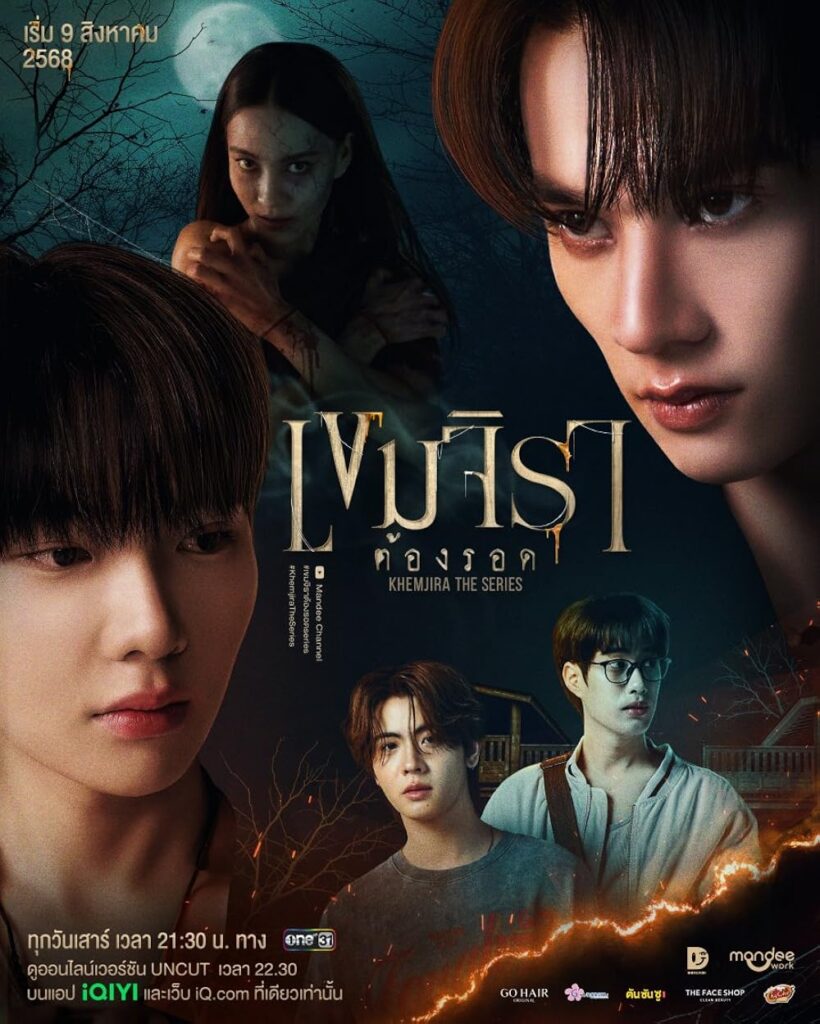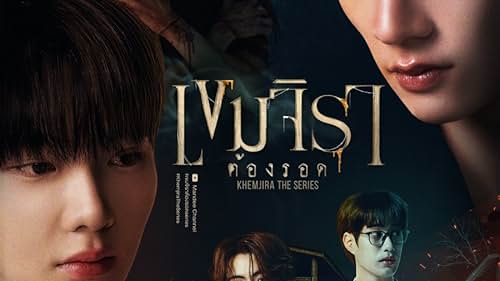The Khemjira review why this 2025 Thai supernatural drama delivers genuine cultural authenticity and emotional depth. Prachya Pinkaew’s masterful direction transforms familiar ghost story territory into something genuinely haunting and emotionally resonant.
What happens when you combine ancient Thai folklore with the most complex bonds between the living and the dead? You get supernatural drama perfection. Khemjira (2025), directed by Prachya Pinkaew, stands as one of the most compelling horror dramas in recent international film history. This intense supernatural thriller follows a young woman who discovers her ability to communicate with restless spirits while investigating her grandmother’s mysterious death in rural Thailand. While the film operates on familiar ghost story territory, it succeeds because it never exploits its premise—every moment of supernatural terror and character development is handled with complete cultural authenticity.

Synopsis
Khemjira returns to her ancestral village in northern Thailand to settle her grandmother’s estate, only to discover that the old woman’s death was surrounded by unexplained circumstances. As she begins experiencing disturbing visions and supernatural encounters, Khemjira learns that she has inherited more than just property—she possesses the rare ability to see and communicate with spirits trapped between worlds.
With the help of a local monk and her childhood friend Niran, Khemjira must navigate the complex world of Thai spiritual beliefs while uncovering dark family secrets that have haunted her bloodline for generations. The film follows her transformation from skeptical modern woman to reluctant spiritual mediator determined to help restless souls find peace.
Plot & Themes
Khemjira operates on a deceptively complex premise: sometimes the most profound connections transcend the boundary between life and death. The rural Thai setting serves as both atmospheric backdrop and cultural foundation for exploring deeper questions about family duty, spiritual responsibility, and the courage to face inherited trauma.
The film’s genius lies in its careful balance between supernatural elements and emotional storytelling. When Khemjira confronts vengeful spirits while processing her grandmother’s hidden past, the movie never treats her spiritual encounters as secondary to the family drama. These moments work because Pinkaew understands that true horror comes from emotional investment in both the living and the dead.
Thematically, the movie explores how ancestral trauma affects future generations and how accepting spiritual gifts can become a path to family healing. Khemjira’s journey isn’t just about communicating with ghosts—it’s about discovering that honoring the past is essential for moving forward.
Cinematography & Visuals
The cinematography captures the mystical beauty of rural Thailand with visual techniques that serve both the supernatural and cultural elements perfectly. The visual style emphasizes the contrast between modern skepticism and ancient spiritual traditions, using natural lighting and traditional Thai architecture to create mounting atmospheric tension.
The film excels in building supernatural dread through environmental storytelling. The sequences showing spirit manifestations and ritual ceremonies demonstrate excellent use of practical effects and cultural authenticity. The camera work holds on meaningful moments of spiritual connection and ancestral revelation just long enough to create genuine emotional investment.
Cultural details reward careful viewing. During ceremonial sequences, attentive viewers will notice how Khemjira’s growing understanding of her heritage is reflected in her improved ability to navigate spiritual protocols and communicate with different types of spirits.
Acting & Characters
Davika Hoorne delivers a compelling performance as Khemjira, anchoring the film with her portrayal of a woman discovering powers she never wanted while honoring obligations she never understood. Her character arc from modern skeptic to spiritual mediator feels authentic and earned rather than forced.
Sonthaya Chitmanee provides excellent support as the monk who guides Khemjira’s spiritual education, bringing both wisdom and gentle humor to his role. His chemistry with Hoorne creates a believable mentor-student relationship that grounds the supernatural elements in genuine cultural tradition.
Thanapob Leeratanakajorn rounds out the core cast with a performance that balances romantic interest with loyal friendship. His scenes during the most dangerous supernatural encounters demonstrate genuine concern while maintaining character consistency.
The supporting cast, including the various spirits and village elders, brings authenticity without falling into stereotype, creating believable characters that serve the cultural storytelling rather than overwhelming it.
Direction & Screenplay
Prachya Pinkaew’s direction maintains perfect atmospheric tension throughout the film’s runtime. Coming from his experience with Thai action cinema, Pinkaew understood that supernatural films require careful pacing that builds dread without sacrificing cultural authenticity. Every spiritual encounter and family revelation is given space to resonate emotionally.
The screenplay layers mystery at multiple levels:
- Character development that explores cultural identity authentically
- Supernatural elements that feel rooted in genuine Thai folklore
- Family drama that builds naturally from generational secrets
- Spiritual themes that never feel forced or westernized
The script’s structure follows ghost story conventions while honoring them through authentic cultural perspective. This creates familiarity that makes the unexpected moments of spiritual revelation and family truth land with greater impact.
Sound & Music
The film’s score perfectly balances traditional Thai instruments with contemporary horror elements to create an audio landscape that mirrors Khemjira’s journey between worlds. The music enhances rather than overwhelms the natural drama of spiritual encounters and family discoveries.
Sound design plays a crucial role in building supernatural atmosphere. The way spirit voices layer with natural sounds, how traditional chants create protective barriers, and the contrast between modern life and ancient rituals creates an immersive experience that places viewers directly into Thai spiritual tradition.
The use of silence deserves particular recognition. Key moments of spiritual communication and ancestral connection are allowed to breathe without musical manipulation, trusting audiences to connect with the profound nature of these encounters through performance alone.
Conclusion & Verdict
Khemjira succeeds because it treats its supernatural premise with cultural respect and emotional intelligence that serves both entertainment and heritage preservation without sacrificing either. Every element—from performance to cinematography to sound design—works in service of both effective horror storytelling and authentic cultural representation.
Strengths:
- Authentic portrayal of Thai spiritual traditions that feels researched and respectful
- Strong lead performance that creates believable cultural and supernatural journey
- Excellent atmospheric building that relies on genuine dread rather than cheap scares
- Thoughtful exploration of family legacy and spiritual responsibility through action rather than exposition
Minor Weaknesses:
- Some supernatural elements may feel unfamiliar to Western audiences seeking conventional horror
- Occasional pacing issues when cultural explanation slows narrative momentum briefly
This film remains essential viewing for horror fans and anyone interested in authentic international supernatural cinema. Khemjira works for audiences who enjoyed The Wailing, Shutter, or Pee Mak.
Rating: 8.5/10
Director: Prachya Pinkaew
MPAA Rating: PG-13 (for supernatural terror, disturbing images, and thematic material)
Starring: Davika Hoorne, Sonthaya Chitmanee, Thanapob Leeratanakajorn, Sawanee Utoomma
For more international horror reviews, check out our analysis of other Thai supernatural films. You can also explore the film’s cultural context and production details at international cinema databases.


